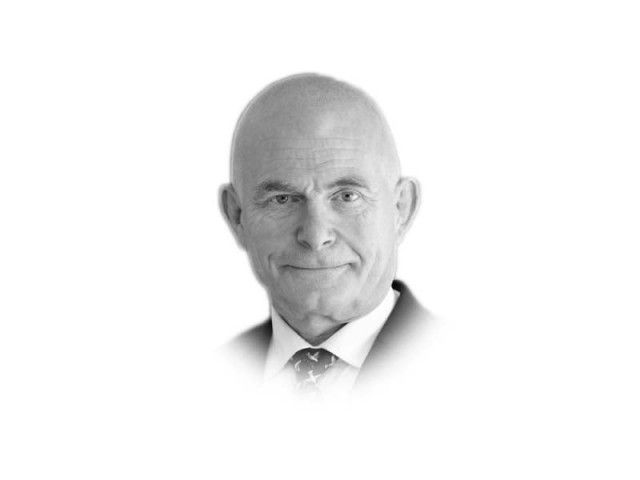The power of Womenomics
Womenomics is not just a good social move, it is also good for business

Women globally are moving into a growing space as innovators, entrepreneurs, startup founders, techies, businesswomen, as well as home-based workers. From their existing roles in traditional economic sectors of agriculture, health, education, etc., women are now making inroads in the Fourth Industrial Revolution to drive global and regional knowledge economies of scale.
The idea of women as drivers of a nation’s economy can be understood by ‘Womenomics’ — a term coined by Kathy Matsui, a strategist at Goldman Sachs, and launched by former Japanese prime minister Shinzo Abe in 2013 to stimulate his country’s economic growth and promote gender equality in the workforce.
Womenomics is not just a good social move, it is also good for business: $12 trillion could be added to the global GDP by 2025 by advancing women’s equality. Yet, while women’s control of investible wealth is on the rise, major barriers continue to prevent achieving SDG Goal 5 of Gender Equality in developing economies like Pakistan. At the global level, women currently represent 38.8% of the global labour force, and just 20% in Pakistan.
Inequality in opportunity and in working Pakistan’s barriers against women’s economic empowerment generally include lack of gender-sensitive policies, income inequality, attitudes/harassment at workplaces, and stereotypes defining women’s role in society. For those already stepping into the workforce, however, additional barriers include a lack of gendered infrastructure at workplaces, gender pay gaps, limited mobility, scarcity of public toilets, denial/discrimination of professional development and leadership opportunities, job security, and other occupational hazards.
For Womenomics to become a reality in Pakistan, both traditional and emerging occupational barriers need to be structurally and systemically addressed.
Out of the only 13.5 million (20%) women taking part in Pakistan’s labour force, seven million women working in agriculture fall under the category of contributing family workers and remain unrecognised and unpaid. The gap between men and women’s earnings has also increased. In 2018-2019, women earned just 18% of what men earned. Cultural expectations must also be addressed, as they contribute to women’s ‘time poverty’. For example, women in Pakistan spend nearly 10 times the hours as men in unpaid care work.
Meanwhile, in all too many households, women are compelled to give all their earnings to their family and have no financial independence or freedom to spend as they choose. This perpetuates a vicious cycle of silent exploitation and abuse — one where women are made to be completely dependent upon male family members for good.
Financial inclusion is imperative for women to access loans, credit, and to save for a more secure future. In Pakistan, however, 94% of adult women do not have a formal bank account, according to the World Bank. Of late, a number of efforts have been made to promote women’s financial inclusion in the country. These include adoption of targets for improving access to bank accounts (at least 20 million adult women should have an active bank account by 2023); improving financial literacy of women under the State Bank of Pakistan’s National Financial Literacy Program; and provision of loans of up to Rs5 million for women entrepreneurs under the Refinance & Credit Guarantee Scheme.
Financial inclusion can benefit greatly from technology. Mobile access can transform economic isolation into connectivity, thereby empowering women in rural areas and inhibiting social environments. Unfortunately, there is a 33% gender gap in mobile usage in Pakistan — something that must be addressed in order to realise women’s full potential. Similarly, investment in skills and training is the need of the hour. Women must be imparted skills as ship keepers, business agents, goods sellers, marketers, stock dealers, investors, etc.
More research and development are needed on exploring the linkages between innovation, growth, and women’s economic participation to demonstrate their direct contribution to the national GDP. The ongoing Covid-19 response and recovery initiatives have digitised the way things work, with major impact in the education and health sectors. The key question then is to see how these revolutionary trends and innovations can foster women-led economic recovery and growth.
Recognising these needs, UNDP Pakistan is providing economic empowerment opportunities to women through vocational skills training, startup tool kits, and support in establishing businesses through partnerships with microfinance institutions. Our Business Incubation Programme focuses on creating income-generation opportunities for young women in the Merged Districts of Khyber Pakhtunkhwa. Our Youth Innovation Challenge provides grants to women for youth-led initiatives and enterprises working to solve development challenges in Balochistan. With the help of the European Union, we have established women’s dormitory and childcare facility at a Regional Training Centre in Swat, Khyber Pakhtunkhwa, for women police officers. We also support Gender Desks in Khyber Pakhtunkhwa’s Merged Districts, Sindh, and Punjab provinces, which serve to link local women to government service providers and enhance their agency and mobility.
As part of Pakistan’s national commitment to achieving Agenda 2030 of ‘Leave No One Behind’ in sustainable development, we have a clear opportunity pathway ahead of us — invest in women as drivers of Pakistan’s economic growth.
Published in The Express Tribune, March 12th, 2021.
Like Opinion & Editorial on Facebook, follow @ETOpEd on Twitter to receive all updates on all our daily pieces.














COMMENTS
Comments are moderated and generally will be posted if they are on-topic and not abusive.
For more information, please see our Comments FAQ